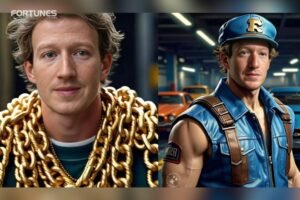NASA has licensed SpaceX to launch their new Nancy Grace Roman Space Telescope, which will explore space secrets. The launch has been tentatively set for October 2026, with SpaceX’s Falcon Heavy serving as the launch vehicle.
NASA describes the deal as an indeterminate delivery and indefinite quantity contract that is subject to modification. The overall cost of the telescope, including launch and mission expenses, is estimated to be $255 million.
The telescope’s mission is to research dark matter and dark energy, as well as to look for exoplanets. Dark matter is the stuff that makes up the majority of the cosmos, whereas dark energy is the unknown mechanism by which the universe continues to expand.
What is the purpose of the Roman Space Telescope?
Thirty years ago, scientists couldn’t even be sure that exoplanets (planets orbiting other stars) existed. We now know of over 4,000, due in large part to NASA’s Kepler Space Telescope, which discovered that the vast majority of stars in our galaxy have their solar systems. Kepler discovered largely big planets orbiting faint stars. TESS, NASA’s Transiting Exoplanet Survey Satellite, expands on Kepler’s survey work by searching for smaller planets orbiting brighter stars.

Now it’s time to finish the initial galactic exoplanet census by looking for even smaller, rocky worlds the size of Earth. The five-year mission of the Roman Space Telescope will begin in the mid-2020s, to survey 100 million stars and discover 2,500 new exoplanets. Many will be rocky planets the size of Earth. RST will also utilize a coronagraph, a light-blocking disc, to directly picture selected planets, revealing their compositions for the first time.
How will the Roman Space Telescope function?
The telescope will use an exceptional method known as microlensing to look for exoplanets. Consider microlensing to be Einstein’s magnifying glass: planets, stars, and galaxies have such massive gravitational fields that they can bend and amplify light from other objects behind them, resulting in stunning halos in space.
Scientists will study RST survey photos for microlensing occurrences, which will allow them to locate even tiny, rocky exoplanets. RST’s camera is just as sensitive as Hubble’s, but with a 100-fold larger field of vision. That implies RST will be able to capture a lot more data at once, regardless of what it is looking at.
The Roman Space Telescope will be able to detect some of the light wavelengths emitted by the exoplanets it directly photographs. This will provide scientists with additional information about the makeup of the atmospheres of exoplanets. It will function best on Jupiter-sized planets, therefore we won’t be able to peek into the atmospheres of Earth-sized exoplanets. However, RST’s coronagraph is designed primarily to evaluate coronagraph technologies for future missions. Scientists have suggested employing enormous star blinds to properly obscure starlight so that we can directly photograph Earth-sized planets to search for life.
The Wide Field Infrared Survey Telescope, which was suggested by the important 2010 Astronomy and Astrophysics Decadal Survey, was called after Dr. Nancy Grace Roman. Her work influenced the development of big space telescopes.
With a vision 100 times larger than the Hubble Space Telescope, Roman will provide never-before-seen huge images of the universe to help astronomers investigate some of the universe’s greatest mysteries. There will be two instruments:
• 300-megapixel Wide Field Sensor – With a field of view 100 times bigger than the Hubble infrared instrument, it can record more of the sky in less time. This means that a single Roman photograph can contain the detail of 100 Hubble images.
• Coronagraph instrument for imaging and spectroscopy of specific neighboring exoplanets (planets beyond our solar system).
NASA estimates that the overall cost of launching the Roman Space Telescope will be around USD255 million, which includes the launch service and other mission-related expenditures.








